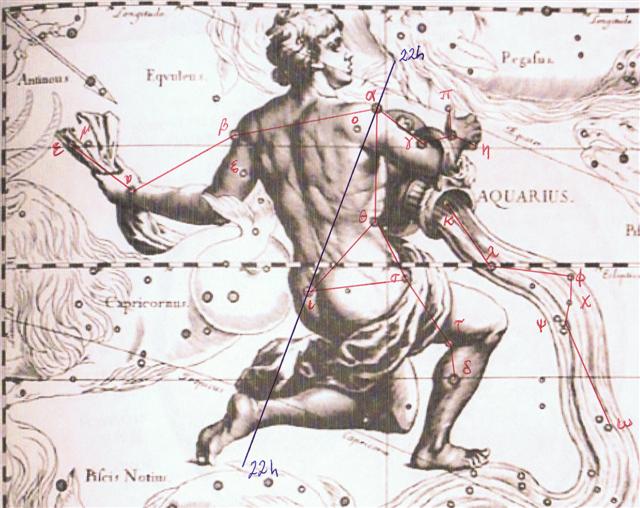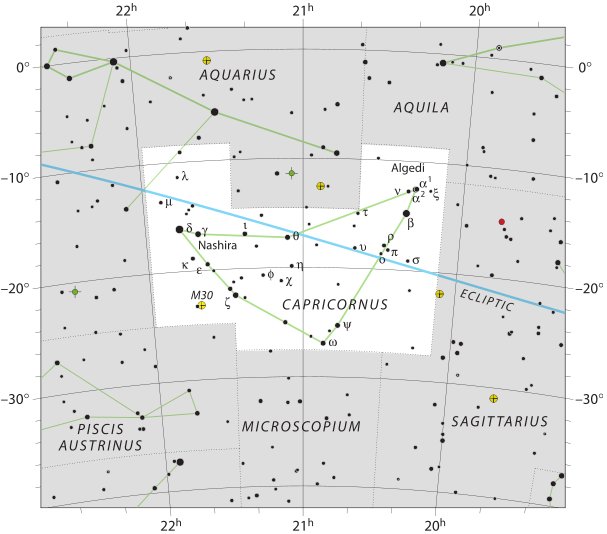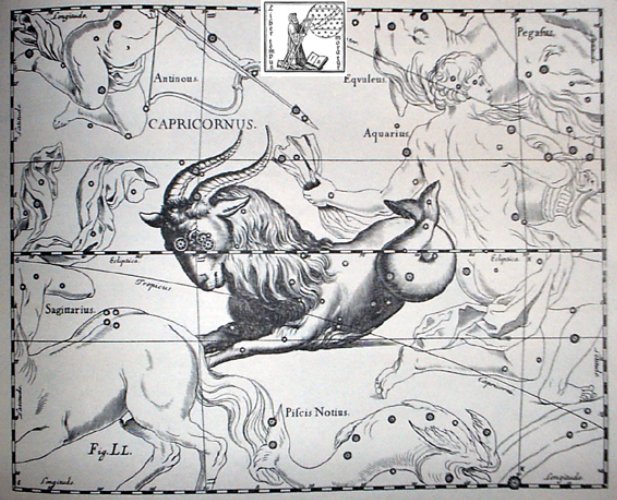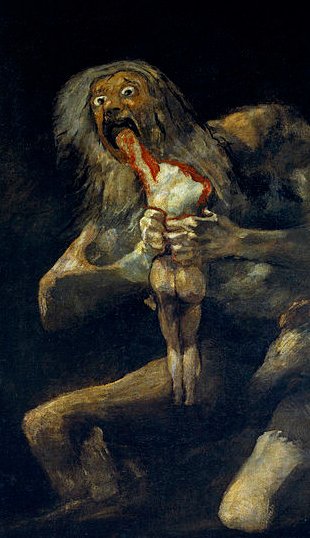The first page for line Gb3: To get the proper perspective for studying line Gb3 it is necessary to go back in time to heliacal Sadalsud (β Aquarii), because this was once upon a time the position where the northern winter solstice began. In rongorongo times Sadalsud rose with the Sun in February 9 (325 days after 0h) and at the time of the Hyades Gate the star rose 64 days earlier. 325 - 64 = 261: ... On February 9 the Chorti Ah K'in, 'diviners', begin the agricultural year. Both the 260-day cycle and the solar year are used in setting dates for religious and agricultural ceremonies, especially when those rituals fall at the same time in both calendars. The ceremony begins when the diviners go to a sacred spring where they choose five stones with the proper shape and color. These stones will mark the five positions of the sacred cosmogram created by the ritual. When the stones are brought back to the ceremonial house, two diviners start the ritual by placing the stones on a table in a careful pattern that reproduces the schematic of the universe. At the same time, helpers under the table replace last year's diagram with the new one. They believe that by placing the cosmic diagram under the base of God at the center of the world they demonstrate that God dominates the universe. The priests place the stones in a very particular order. First the stone that corresponds to the sun in the eastern, sunrise position of summer solstice is set down; then the stone corresponding to the western, sunset position of the same solstice. This is followed by stones representing the western, sunset position of the winter solstice, then its eastern, sunrise position. Together these four stones form a square. They sit at the four corners of the square just as we saw in the Creation story from the Classic period and in the Popol Vuh. Finally, the center stone is placed to form the ancient five-point sign modern researchers called the quincunx ... I guess we maybe can put in parallel these 5 stones with the heliacal stars and glyphs in the following manner:
And maybe the 2nd cartouche below - with Gemini in spring at the time when Mars uplifted the Sun - illustrates how there was a table with a Foundation in form of a cosmic diagram with a pair (twins) of quincunx signs - perhaps the origin of the structure with 10 months:
In rongorongo times Castor rose with the Sun in July 12 (193) or 113 days after 0h. 113 / 365.25 * 26000 = 8044 years. The 22nd (as in π) Arab station for the Sun (Al Sa'd al Su'ud, the Luckiest of the Lucky) was governed by Sadalsud (β Aquarii), Bunda (ξ Aquarii) and 46 Capricorni.
46 Capricorni could be the ecliptic corner of a triangle formed together with μ and λ, I thought. Cartes du Ciel, however, has 46 higher up, and the corner with a triplet of small stars at the ecliptic has 42 Capricorni at the position I had guessed:
This probably means some modern mind has pushed 46 from its original place in Aquarius to the Capricorn, because the blue outline of Aquarius in the star map above, stretching down from Sadalsud, should include 46 on its way to ι Aquarii. Now we can see that Hevelius has 46 according to the modern view with Sadalsud, Bunda, and 46 in the tail of the Sea-goat:
... In the morning of the world, there was nothing but water. The Loon was calling, and the old man who at that time bore the Raven's name, Nangkilstlas, asked her why. 'The gods are homeless', the Loon replied ... I have no information of any star or asterism named the Loon, but maybe we should think of the Discoverer instead because this was the Coptic name for the 3 stars 'outside' (ε, μ, and ν). At the beginning of time the Loon had discovered the gods had no house (β).
... ε, 3.4, was Al Bali, the brightest one of the 21st manzil, Al Sa'd al Bula', the Good Fortune of the Swallower, which included μ and ν; these last also known as Al Buläān in the dual. Kazwini said that this strange title came from the fact that the two outside stars were more open than α and β of Capricorn, so that they seemed to swallow, or absorb, the light of the other! "The corresponding sieu, Mo, Mu, Niu, Nü, or Woo Neu, a Woman, anciently written Nok, was composed of these stars with the addition of another, unidentified, with ε being the determinant; and the same three were the Euphratean lunar asterism Munaχa, the Goat-fish, and the Coptic Upeuritos, the Discoverer. Bayer mentioned for it Mantellum and Mantile, marking the Napkin, or Towel held in the youth's hand; but in some early drawings this was shown as a Bunch of Grain Stalks. Grotius had Ancha and Pyxis, but neither appropriate; while in our day the former is applied only to θ, and the latter is never seen as a stellar title except in La Caille's Pyxis Nautica in Argo. Eastward from ε, near ν, is the Saturn Nebula, NGC 7009, that the largest telescopes show somewhat like the planet." (Allen)
| ||||||||||||||||||||||||||||||||||||||||||||||||||||||||||||||








